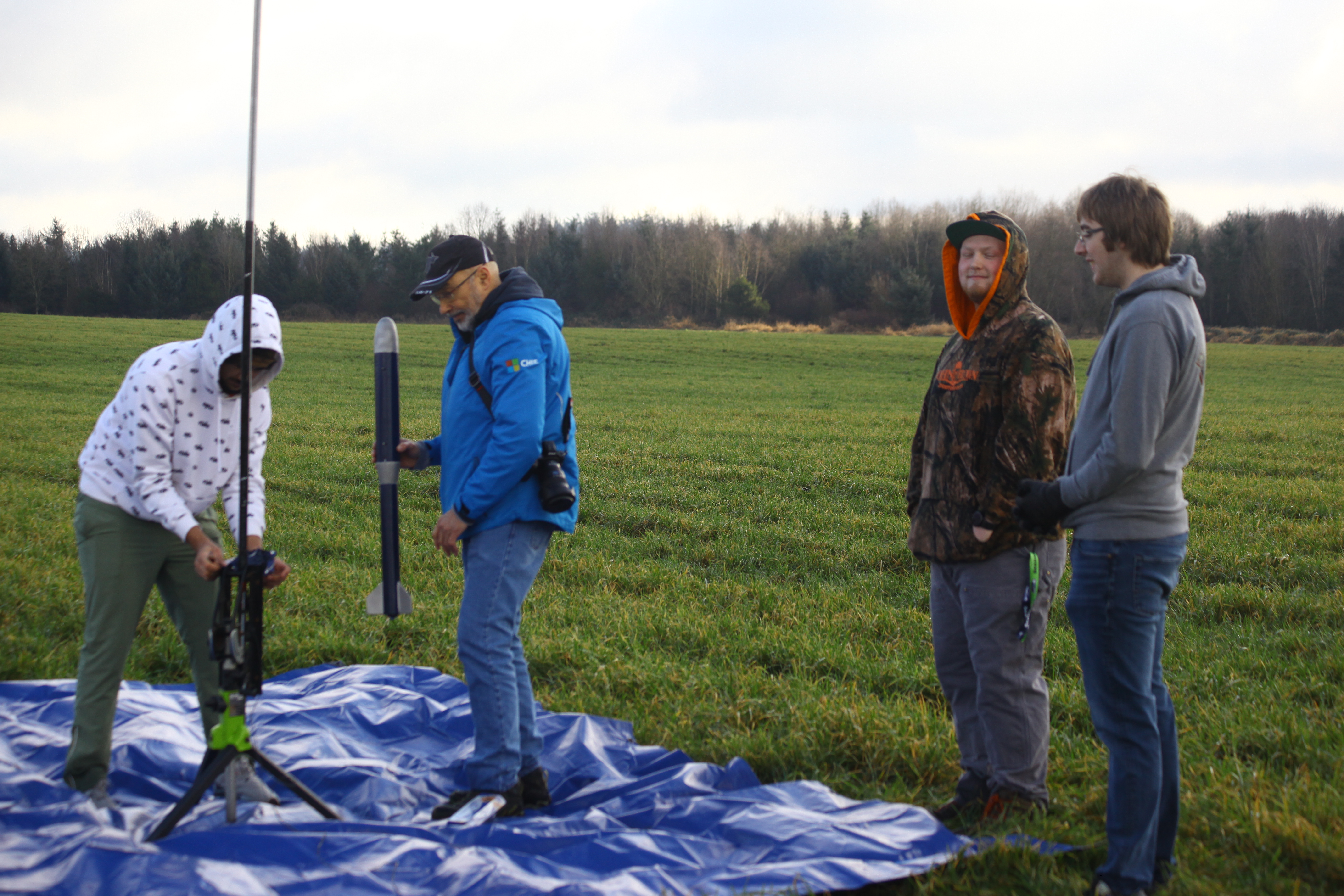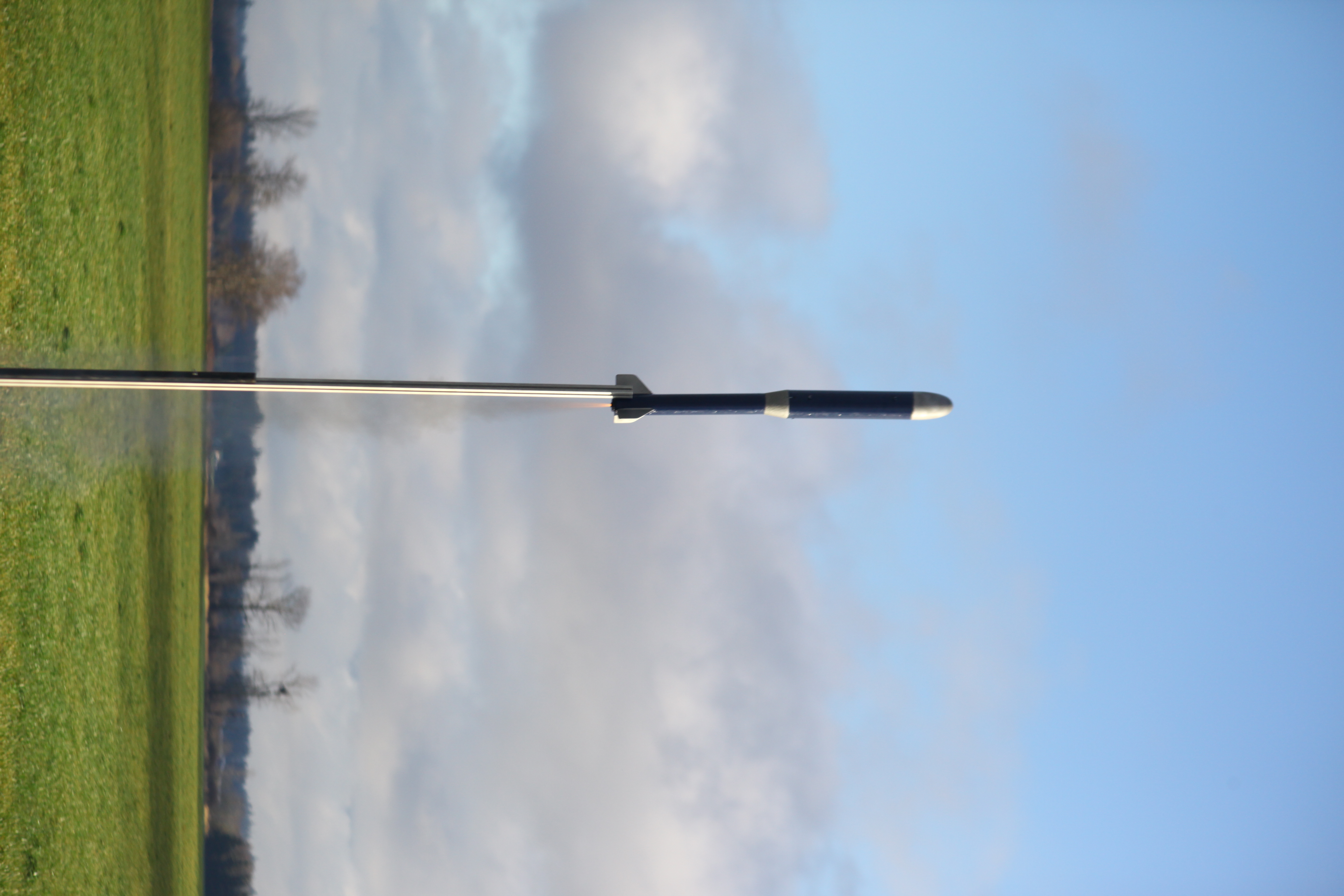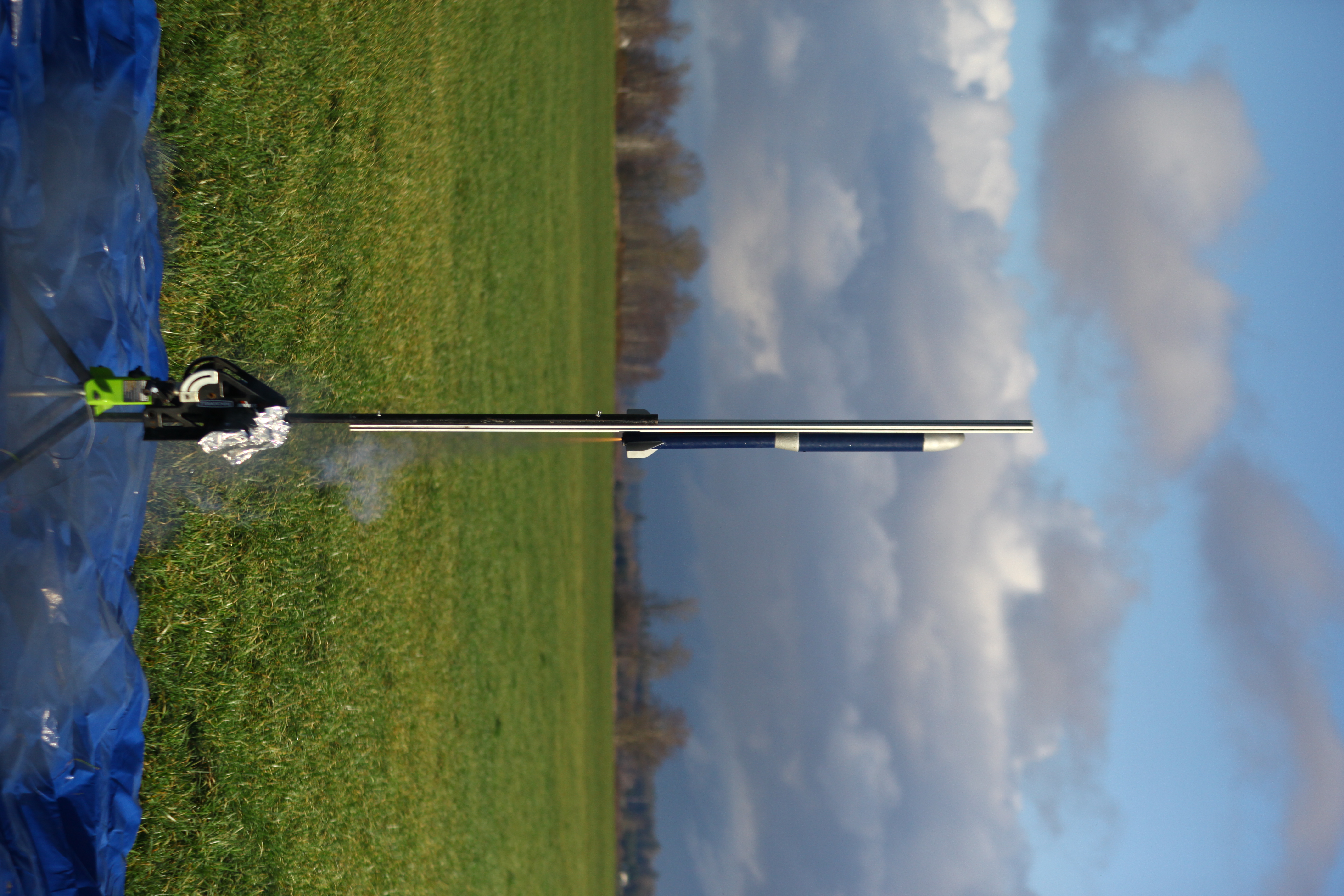January 12, 2025 @ 10:00AM to 1:00PM
After the first two launches where we didn't go quite high enough, we picked out a motor we thought would be stronger and let us go higher.
- Calm winds below two mph.
- Mostly Cloudy. When we arrived Baker was partially visible behind some clouds but by the end not at all.
- 40°F.
- 69% humidity.
- 30.47" pressure.
- Eggs: 58g & 60g (bought from the neighbours to the field with the chicken coop. I forgot to bring any)
- 512g WITHOUT motor
- First flight: F39-6T. It took us like 45 minutes to assemble this reuseable motor. The propellant grain inside of the full outer tube was 25.75g.
- Second flight: Dave did help us drill out the four holes in the balsa transition to be a little bit bigger and we did add blue tape over the top to try to better seal it but I don't think it really changed anything. It is still suboptimal to have the pressure sampling holes in the middle of the transition when the manual specifically says don't put the holes near a body tube irregularity but I don't think it's really our main problem.
- Second flight: F39-6T. This propellant grain measured 25.89g
Results:
- First flight: 630' apogee.
- Second flight: 635' apogee.
- These motors did take a second to ignite, but once they did, they had no sputtering problems like the single-use motors.
- Both eggs survived of course.
- The bottom of the balsa transition did get a little bit burned but we have a backup one at school already so it doesn't really matter.
We were hoping that the rocket would at least go closer to the target height than before and are confused as to why the height is even lower than the smaller one-use motors. At least these motors aren't sputtering and are much more consistent but they're just too weak for some weird reason.
4.pf2, 5.pf2, 2025-01-12.ork


